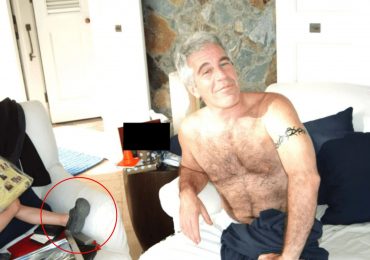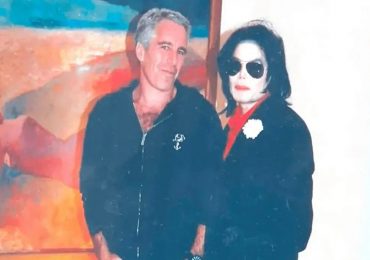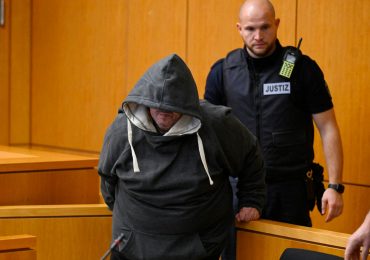WIKILEAKS founder Julian Assange has touched down in Australia after being released from prison in the UK on Monday.
It brings to an end his more than a decade-long legal battle with the US where he fought against extradition and jail time in America.
ReutersWikiLeaks founder Julian Assange’s plane touches down in Canberra, Australian capital[/caption]
ReutersAssange kisses his wife Stella Assange as he arrives in Canberra[/caption]
ReutersAssange touched down in a private jet on Wednesday night in Australia[/caption]
Assange, 52, looks out the window as his plane lands in Bangkok on Tuesday
Assange’s plane touched down in Canberra, the Australian capital on Wednesday night, according to an online flight tracker.
The WikiLeaks founder gave his wife Stella a huge passionate kiss on the tarmac after touching down.
The native Aussie left the UK after five years in Belmarsh prison on Monday afternoon from London Stansted airport.
Assange, 52, was freed when he agreed to a US plea deal in exchange for no jail time in the States.
He then had to appear in a US court to do enter his guilty plea for conspiring to obtain and disclose classified US national defence documents.
But he refused to set foot on the American mainland to finalise his bid for freedom.
Instead he flew to the pacific island of Saipan, 7,000 miles away from the US and home to a US district court.
After completing the final step in his arduous legal battle – Assange was eventually free to return home to Australia where his wife Stella and children are waiting.
His 62 months in a London prison acted as time served.
Stella revealed on Tuesday that the chartered flights taking Assange across the world and home would cost them half a million US dollars.
Assange founded website WikiLeaks which made global headlines in 2010 when it published classified information about the US military.
The posts included video from a US helicopter showing a Baghdad airstrike which killed civilians.
It also exposed sensitive information in the Afghanistan war logs, Iraq war logs, and Cablegate.
Assange was then accused of 18 charges under the US Espionage Act.
American prosecutors alleged that Assange put lives at risk when publishing the information online, beginning the long legal battle to extradite him to the US.
Video shared by WikiLeaks on X on Monday showed its founder boarding a plane at Stansted around 5pm.
He travelled to the airport after his release by car, signed some documents and boarded the plane.
Assange video-called his wife Stella, at home in Australia, from the tarmac.
She told the BBC that the “priority” for the couple is to get Julian “healthy again”.
Stella revealed that the WikiLeaks founder has been “in a terrible state for five years”.
She said they will focus on being “in contact with nature” once he returns home.
Assange’s wife also said she is “elated” by the news of his impending return and that the run-up to his release has been a “whirlwind of emotions”.
His brother Gabriel Shipton says it is time for Assange to rest and have “a bit of quiet life for a while” at home in Australia.
Assange has arrived in Thailand on his way to Saipan, which is 10 hours ahead of London time.
His plane was pictured on the tarmac Don Mueang International Airport in Bangkok while the plane refuels before heading onto the Pacific island.
Australia’s prime minister Anthony Albanese said that Assange’s case has “dragged on for too long” and added: “We want him brought home to Australia”.
Timeline of Assange’s legal battle
2006 – Assange founds Wikileaks
April 2010 – Website releases leaked vid from a US helicopter allegedly showing an air strike that killed civilians in Baghdad
July 2010 – WikiLeaks shares more than 91,000 docs
August 2010 – Arrest warrant is issued for Assange over two separate allegations, one of rape and one of molestation, after he visits Sweden for a speaking trip. He is questioned by police in Stockholm and denies the allegations
November 2010 – International arrest warrant issued by Swedish police through Interpol after court approves a request to detain him for questioning on suspicion of rape, sexual molestation and unlawful coercion
December 2010 – Assange surrenders to police in London and is detained pending an extradition hearing. The High Court grants Assange bail
February 2011 – A district court in Britain rules Assange should be extradited to Sweden
June 2012 – Assange enters the Ecuadorian Embassy in central London, seeking asylum, after his bids to appeal the extradition ruling fail. Police set up an around-the-clock guard to arrest him if he steps outside
August 2012 – Assange is granted political asylum by Ecuador
July 2014 – Assange loses his bid to have an arrest warrant issued in Sweden against him cancelled. A judge in Stockholm upholds the warrant alleging sexual offenses against two women
March 2015 – Swedish prosecutors ask to question Assange at the Ecuadorian Embassy
August 2015 – Swedish prosecutors drop investigations into some allegations against Assange because of the statute of limitations; an investigation into a rape allegation remains active
October 2015 – Metropolitan Police end their 24-hour guard outside the Ecuadorian Embassy but say theyll arrest Assange if he leaves, ending a three-year police operation estimated to have cost millions
February 2016 – Assange claims total vindication as the U.N. Working Group on Arbitrary Detention finds that he has been unlawfully detained and recommends he be immediately freed and given compensation. Britain calls the finding frankly ridiculous
September 2018 – Ecuador’s president says his country and Britain are working on a legal solution to allow Assange to leave the embassy
October 2018 – Assange seeks a court injunction pressing Ecuador to provide him basic rights he said the country agreed to when it first granted him asylum
November 2018 – A U.S. court filing that appears to inadvertently reveal the existence of a sealed criminal case against Assange is discovered by a researcher. No details are confirmed
April 2019 – Ecuadorian President Lenin Moreno blames WikiLeaks for recent corruption allegations; Ecuador’s government revokes Assange’s asylum status. London police haul Assange out of the Ecuadorian Embassy and arrest him for breaching bail conditions in 2012, as well as on behalf of U.S. authorities
May 2019 – Assange is sentenced to 50 weeks in prison for jumping bail in 2012.
May 2019 – The U.S. government indicts Assange on 18 charges over WikiLeaks publication of classified documents. Prosecutors say he conspired with U.S. Army intelligence analyst Chelsea Manning to hack into a Pentagon computer and release secret diplomatic cables and military files on the wars in Iraq and Afghanistan
November 2019 – Swedish prosecutor drops rape investigation.
May 2020 – An extradition hearing for Assange is delayed during the COVID-19 pandemic.
June 2020 – The U.S. files a new indictment against Assange that prosecutors say underscores Assanges efforts to procure and release classified information.
January 2021 – A British judge rules Assange cannot be extradited to the U.S. because he is likely to kill himself if held under harsh U.S. prison conditions.
July 2021 – The High Court grants the U.S. government permission to appeal the lower court’s ruling blocking Assange’s extradition.
December 2021 – The High Court rules that U.S. assurances about Assange’s detention are enough to guarantee he would be treated humanely.
March 2022 – Britain’s Supreme Court refuses to grant Assange permission to appeal against his extradition.
June 2022 – Britain’s government orders the extradition of Assange to the United States. Assange appeals.
May 2023 – Australian Prime Minister Anthony Albanese says Assange should be released and nothing is served by his ongoing incarceration.
June 2023 – A High Court judge rules Assange cannot appeal his extradition.
February 20, 2024 – Assange’s lawyers launch a final legal bid to stop his extradition at the High Court.
March 26, 2024 – Two High Court judges in London give U.S. authorities three more weeks to submit further assurances, including a guarantee that Assange won’t get the death penalty, before deciding whether they will grant him a new appeal against his extradition.
May 20, 2024 – The two High Court judges rule that Assange can mount a new appeal based on arguments about whether he will receive free-speech protections or be at a disadvantage because he is not a U.S. citizen. The date of the hearing has yet to be determined.
June 24, 2024 – The U.S. Justice Department says in a letter filed in court that, under a deal with the agency, Assange will be allowed to walk free in return for pleading guilty to an Espionage Act charge of conspiring to unlawfully obtain and disseminate classified national defense information.
GettyAssange leaves the US District Court in Saipan on Wednesday[/caption]
EPAMembers of the media wait for the arrival of WikiLeaks founder Julian Assange at Fairbairn airbase, Canberra Airport[/caption]
Leave a comment








